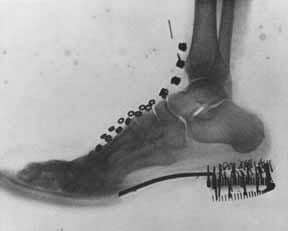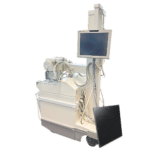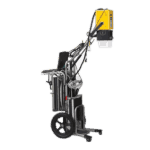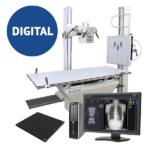Fleischman decided to dedicate her life to radiography when she learned of Wilhelm Rontgen’s breakthrough with X-Rays in 1896

Elizabeth Fleischman was one of the first women pioneers in radiology; she was born in California in 1859. Even though she only worked with X-Rays for nine years, her presence was strongly felt in the radiology community. Even today, she is remembered fondly for her contributions.
Fleischman was the daughter of a Jewish baker slash merchant, and had to drop out of high school due to financial difficulties. She then worked as bookkeeper before she moved in with her sister Estelle. Estelle’s husband was a physician and surgeon. Fleischman began work in his medical practice, where her budding interest in X-Rays soon began to blossom.
Diving into Radiology
Fleischman decided to dedicate her life to radiography when she learned of Wilhelm Rontgen’s breakthrough with X-Rays in 1896. She read every book and publication on the subject that she could find. From Practical Radiography by Henry Snowden Ward to Prof. Roentgen’s X Rays by August Dittmar, she immersed herself in the study ofX-Rays.
Fleishman enrolled in the school in 1896 to study electrical science, spurred by an X-Ray lecture and presentation given by Professor Albert Van der Naillen of the Van Der Naillen School of Engineering. Afterwards, her father helped her purchase an X-Ray apparatus and a fluoroscope. She mastered the art of X-Rays in less than a year. Soon, she opened her very first X-Ray laboratory in San Francisco, becoming California’s earliest radiologist by a margin of many years. She married Israel J. Aschheim in 1900, hyphenating her name to Fleischman-Aschheim, which was incredibly uncommon for a woman at the time.
Perfecting the Craft
It wasn’t long until Fleishman was being praised for her talented radiography skills. She was employed by officers of the government to do X-Ray work on the Pacific Coast in San Francisco. She also was complimented in many medical and scientific journals. Even the Surgeon General at the time, George Sternberg, praised Fleishman for her work when he visited her laboratory and said that her radiographs were the best he’d ever seen. She did all of the radiographic work for the U.S. Army, and was first shown to be especially skilled when wounded soldiers came back from the Phillippines. She was able to locate the bullets and shell-splinters imbedded in the soldiers bodies, in order for the surgeons to remove them.
The Roentgen Society of the U.S. expressed his many thanks to her in a letter, and noted that “If Miss Fleischman is a fair criterion of what other women may do in radiography it will be well for us that the infection should spread. Miss Fleischman has improved the art and made diagnosis more certain and has succeeded financially and socially.”
Get Started
Request Pricing Today!
We’re here to help! Simply fill out the form to tell us a bit about your project. We’ll contact you to set up a conversation so we can discuss how we can best meet your needs. Thank you for considering us!
Great support & services
Save time and energy
Peace of mind
Risk reduction
Sacrifice for Radiography
In 1904, after eight years of tireless work in the X-Ray community, becoming “indispensable to Army physicians” as stated in the San Francisco Chronicle, Fleischman noticed burns developing on her hands from the X-Ray radiation. She began wearing gloves to protect herself, but it was too late. in 1905, Fleischman lost her right arm due to significant radiation poisoning that disintegrated the tissue of her skin; the amputation being the only way to save her life. She had to give up her illustrious career and never regained her health. She died seven months later at the young age of 46.
Fleischman was greatly missed in the medical community, and it was noted that science lost one of the most ardent workers in the interests of afflicted humanity. Her tombstone in Salem Cemetery in San Francisco reads, “I think I did some good in this world.”
Fleischman is continually remembered as one of the greatest pioneers in X-Ray science. She paved the way for many women after her in the medical industry.



